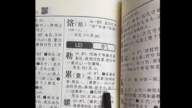【新唐人2012年12月19日讯】中国随着人口老龄化日渐严重和经济增长的减速,养老保险支出成为突出的矛盾问题。17号,中国社会科学院发表报告指出,2011年中国城镇职工养老金收不抵支的省份达14个,收支缺口接近767亿元,高于2010年。而养老金空账额度超过了2万亿。有评论指出,中共养老金制度,体现出中共治理国家的能力问题。
根据中国社科院发布的报告显示,2011年中国养老金亏损省区有14个,收支缺口增加到766.5亿元人民币,远高于2010年。其中超过一半来自东北三省,其余来自中南部和西北省区。
《新唐人》特约经济评论专家杰森‧马:“整个养老金缺口这个问题,其实跟中国目前的养老金现有的结构有关,比如个人账号、社会统筹等等这样的因素在他社会统筹那一部分,让企业交的部分是非常非常重的,企业的每个员工要交他的工资的20%做为养老金,这个数字在全世界是极少有的。”
中国养老金主要分为两类:机关事业单位人员退休养老金,和企业人员退休养老金。二者实行不同的制度,外界称为养老“双轨制”。
养老金“双轨制”的退休制度,企业职工方面,由企业和职工本人按一定标准缴纳﹔机关和事业单位的退休金,则由国家财政统一发放,也就是直接从国家财政支出养老金。这使得企业退休职工,与机关事业单位退休人员,在养老金收入上的差距极为不合理。
据了解,企业职工养老保险缴费占工资收入的28%,而机关和事业单位未纳入社保体系,不用缴费,然而机关和事业单位退休时的养老金,却是企业职工的3倍。
杰森‧马:“最大的好处还是来自于中共本身集团内部的那些人,比如说一些军队的干部、中共的高级干部,就是这群人,他们实际上是把中国整个80%的医疗资源都占用了,中共养老金的系统,实际上是中共治理国家能力的问题,中共财政拨款不够透明的问题,中国整个分配不均的问题,不是老百姓拿得太多,工资涨的太多,这样的问题。”
社科院的报告还显示,2011年记账额达到24859亿,空账额达22156亿。个人账户空账额继2007年突破万亿大关后,再次突破2万亿。
据了解,早期养老保险制度的设计,依靠在职职工的缴费,来负担已退休职工的养老金,也就是,当时在职职工的个人缴费,无法全部进入自己的个人账户,被部分拿去给退休者发养老金。
个人账户仅仅是一个虚拟账户,一些地方为了满足当期的支付需要,大量动用积累的个人账户基金,这就造成了个人账户的空账问题。
《新唐人》特约经济评论专家杰森‧马认为,以中国过去所谓GDP的发展速度,加上每年财政收入的百分之二、三十的增加速度,实际上早就可以补上养老金缺口。
杰森‧马:“他完全有闲钱可以拿出一笔来补充养老金这个体系,但是他为了面子工程,比如说他愿意花四千亿去搞一个奥运会,花四千亿去搞世贸来给中共自己添面子,但是他不愿拿出钱来储备基金,来充实他的养老金这个财政。”
中国已进入老龄化社会,截至2011年底,60岁及以上老年人口达1.85亿。中国老龄工作委员会办公室副主任朱勇表示,2013年,中国60岁以上老年人口将突破2亿。
而经济学家郎咸平的文章也披露,中国银行等机构发布的一项研究报告预测,到2013年,中国养老金的缺口将达到18.3万亿元。
采访/陈汉 编辑/黄亿美 后制/郭敬
Increase of Imbalance Appears in China’s Pension System
As the population ages and the economic growth declines,
the pension insurance expenditures are becoming an obvious problem.
On Dec. 17, the Chinese Academy of Social Sciences
published a report pointing out that in 2011,
China’s urban workers pension received less than
expenditure in 14 provinces,
a balance gap nearly 76.7 billion yuan higher than in 2010.
Pension accounts are short of more than $ 2 trillion yuan.
Some people comment that China’s pension system reflects
the Chinese Communist Party’s (CCP) ability to govern the country.
According to the report released by the Chinese Academy
of Social Sciences,
there were 14 provinces suffered pension losses in China in 2011.
The payments gap increased to 76.65 billion yuan,
much higher than that in 2010.
Over half of them were from the three northeastern provinces
and the rest from the south-central and northwest provinces.
New Tang Dynasty special Economic Review Expert
Jason Ma: “The entire pension gap problem, in fact,
associates with China’s current pension structure,
such as personal accounts and social pooling factors.
In the social pool, the portion provided by enterprises
is very large.
Each employee of an enterprise has to pay 20% of
his salary as pension, which is rarely seen in the entire world."
The Chinese pension system is divided into two categories,
personnel at institutions retirement pension, and corporate officers’ retirement pension.
Both systems have different implementation.
The outside world called the pension system, “a dual track."
Within the retirement pension “dual track" system, enterprise
employees and enterprises pay according to certain standards;
pension of organizations and institutions is provided by
the state, considered a part of the state financial expenditure.
This allows quite an unreasonable pension income gap
between the businesses’ retired workers and those of the organizations and institutions.
It is understood that corporate employee pension
contribution accounts for 28 percent of their wage income.
The organizations and institutions are not included
in the social security system, not requiring payment.
However, the retirement pension of workers from
the organizations and institutions is three times as much as the enterprise workers.
Jason Ma: “The best benefit goes to the CCP inner circle.
For example, some cadres of the armed forces,
or the senior cadres of the CCP, are actually
taking up to 80% of the entire medical money.
The CCP’s pension system, in fact, is the CCP’s ability
to rule China.
Its problems result from lack of transparency in financial
allocations and the uneven distribution of wealth in China,
instead of from wages rising too fast or people making
too much.”
An Academy of Social Sciences report also showed
that the billing amounted to 2.4859 trillion in 2011; that is 2.2156 trillion in the red.
The personal accounts also broke the 2 trillion mark
in the red in 2007.
It is understood that the early design of the pension insurance
system relies on active employees to pay, and thus,
part of their contributions provide for the pensions of
retired workers, and the rest goes into their own accounts.
The personal account is just a virtual account, and some
places, in order to meet current payment needs of a large
number of disposable accumulated personal account funds,
turn the personal account into an empty account.
New Tang Dynasty special Economic Review expert
Jason Ma believes that with the pace of GDP development
in China, plus an annual 20-30 percent fiscal revenue,
the pension gap should have been filled.
Jason Ma: “China can come up with the money
to supplement the pension system,
but the Chinese regime favored a face-saving project,
such as spending 400 billion yuan for the Olympic Games
instead of allocating the money to the reserve fund and enriching pension finances.”
China has entered an aging society, and as of the end of 2011,
the 60-year-olds and above population reached 185 million.
Zhu Yong, deputy director of the Committee on Aging, says
the 60 years of age and older population will exceed 200 million in 2013.
Economist Lang Xianping’s article also disclosed
that institutions such as the Bank of China released a research
report predicting China’s pension gap will reach 18.3 trillion
yuan in 2013.




























